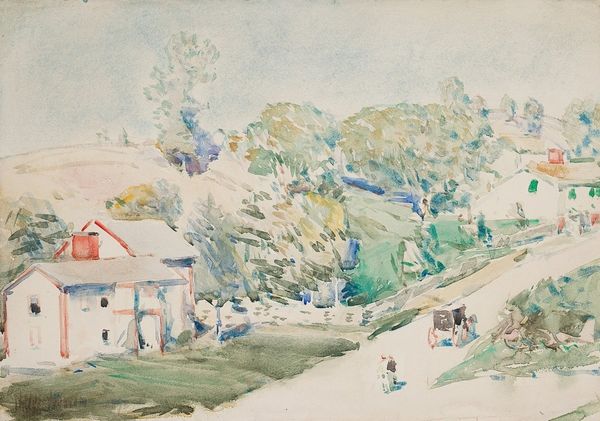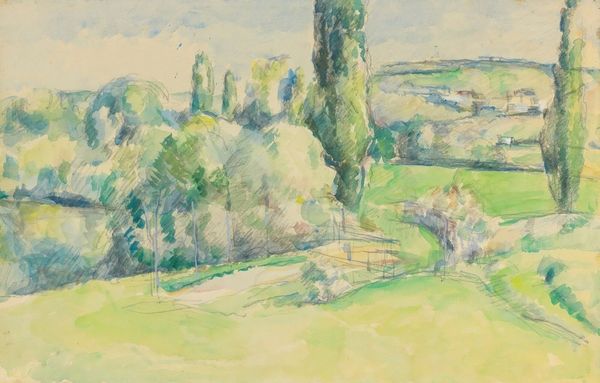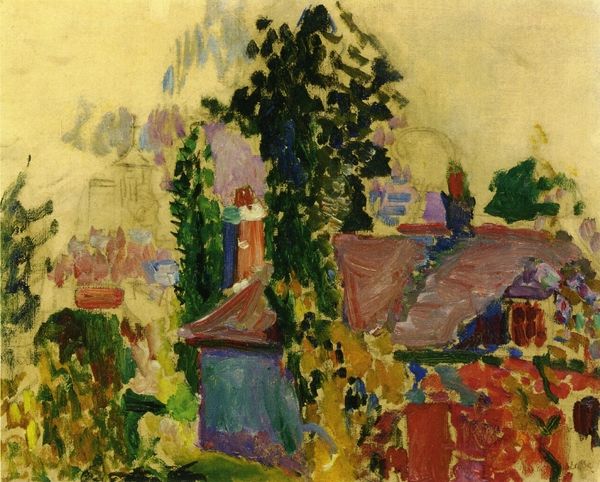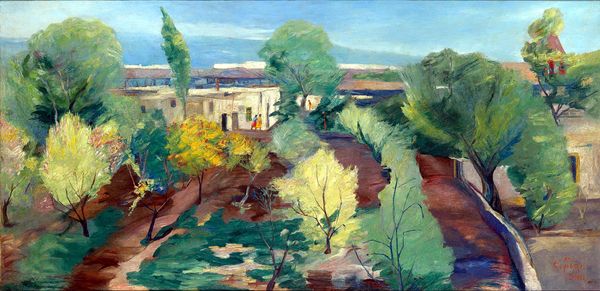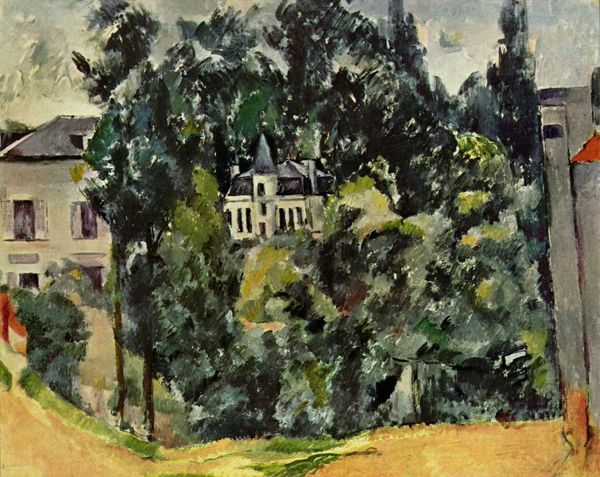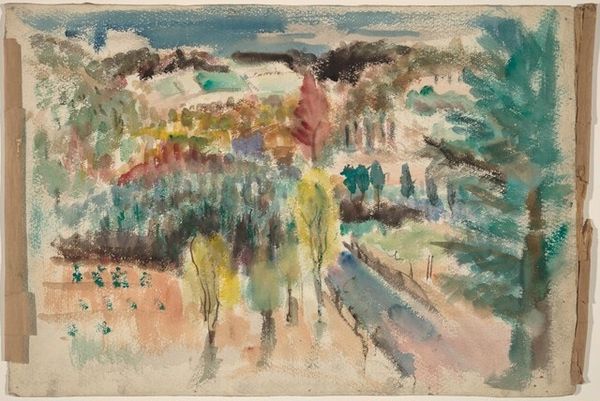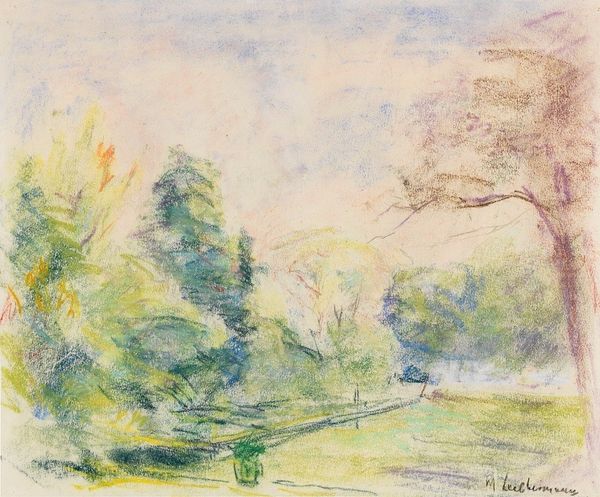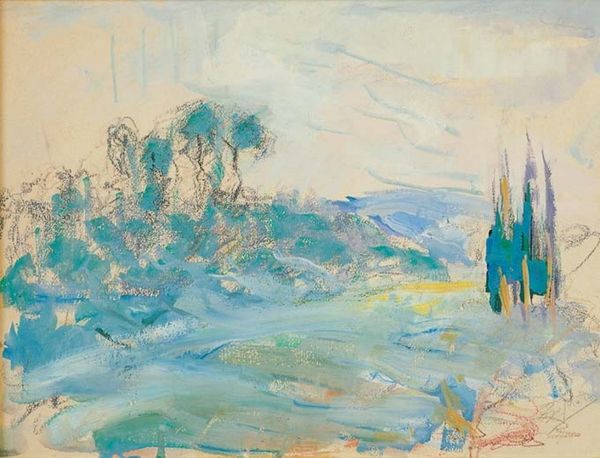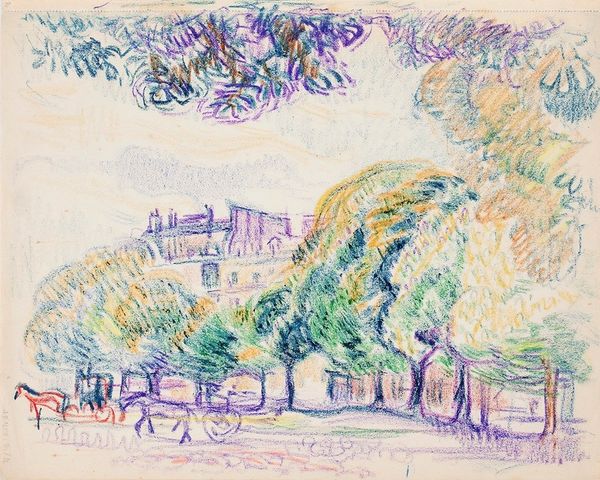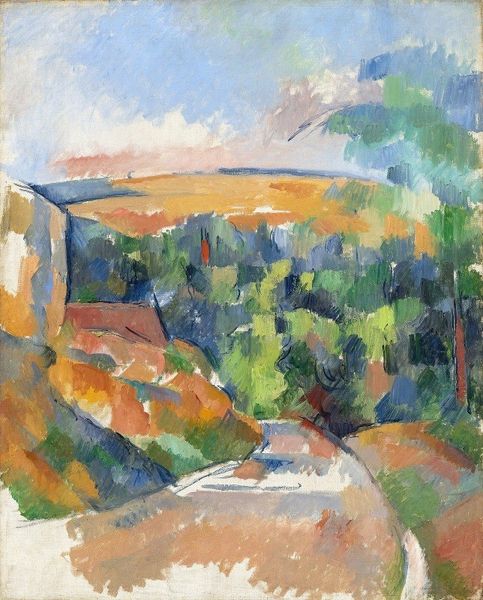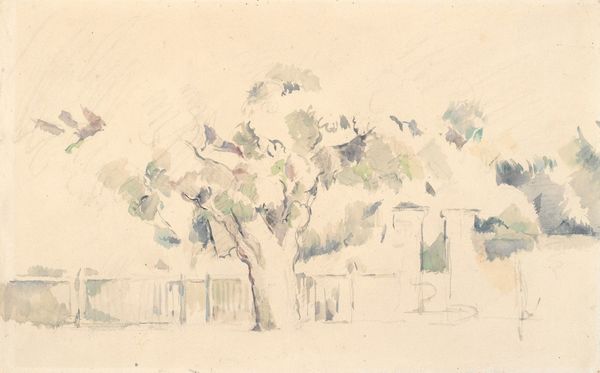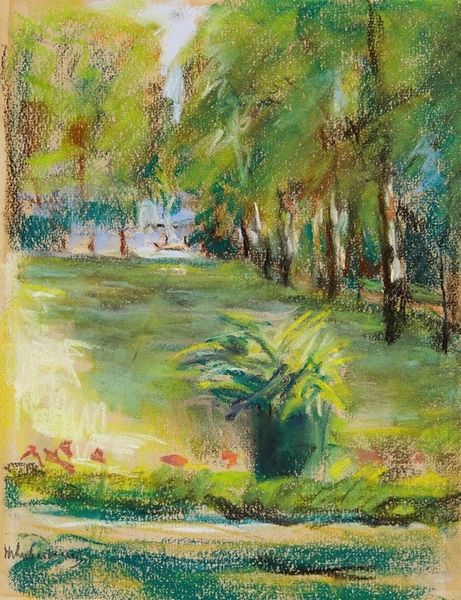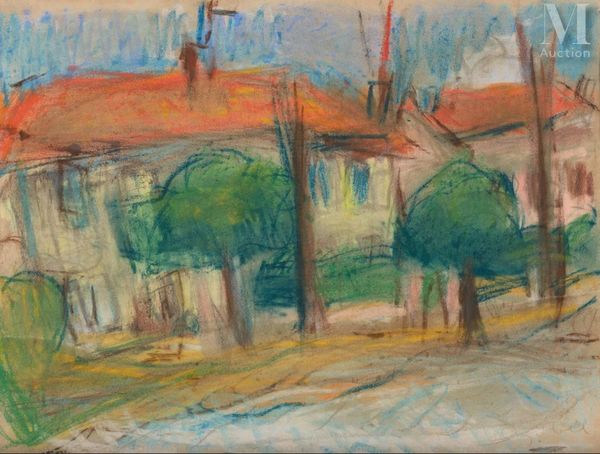
painting, watercolor, impasto
#
water colours
#
painting
#
landscape
#
watercolor
#
impasto
#
intimism
#
post-impressionism
Copyright: Public Domain: Artvee
Curator: Well, it's dreamlike. Look how softly Cézanne renders form in this watercolor. The palette is almost entirely cool, gentle blues, greens, and ambers. Editor: Dreamlike, certainly, but there’s a structural underpinning, even here. Note the terrace itself, the way it creates a distinct foreground. What are we seeing exactly? Curator: This is *The Terrace at the Garden at Les Lauves*, made sometime between 1902 and 1906. He made quite a few works depicting the grounds of his studio towards the end of his life. To me, this captures something almost primal, the return to nature and natural themes as a way to find serenity in old age. Editor: Old age and failing health, yes. Observe the repeated, almost frantic application of thin washes of watercolor; this isn’t just about conveying tranquility but also about the labor involved in its making. Each delicate stroke—consider its relationship to the hand that applied it, the economy of gesture as physical and mental endurance faltered. Curator: It does give it an ethereal quality, the blurring of form. It almost transcends reality as he abstracts the plants, the terrace. They lose solidity, becoming fluid shapes evoking…life continuing. There is such hope and optimism imbued here. Editor: Or resignation. Consider the stark white of the untouched paper, areas left bare as if acknowledging absence, not just of color, but perhaps of strength, vision... possibility. The unworked portions contribute just as meaningfully. Curator: Perhaps...but I prefer to see it as less somber. These garden views offer insight into his inner state: He looks towards a space of peace and personal solace as existence starts to dwindle. Editor: Even that idea of "solace" suggests a lack; this final meditation by Cézanne might also serve as a study of labor as existence starts to dwindle, not the optimistic view. I see how materiality speaks of decline as vividly as the vista might. Curator: Perhaps we meet in the middle, between optimism and resignation? He had so many different viewpoints, both tangible and emotional. Editor: That kind of summarizes it. The watercolor’s inherent transparency is telling of this state of existence.
Comments
No comments
Be the first to comment and join the conversation on the ultimate creative platform.
